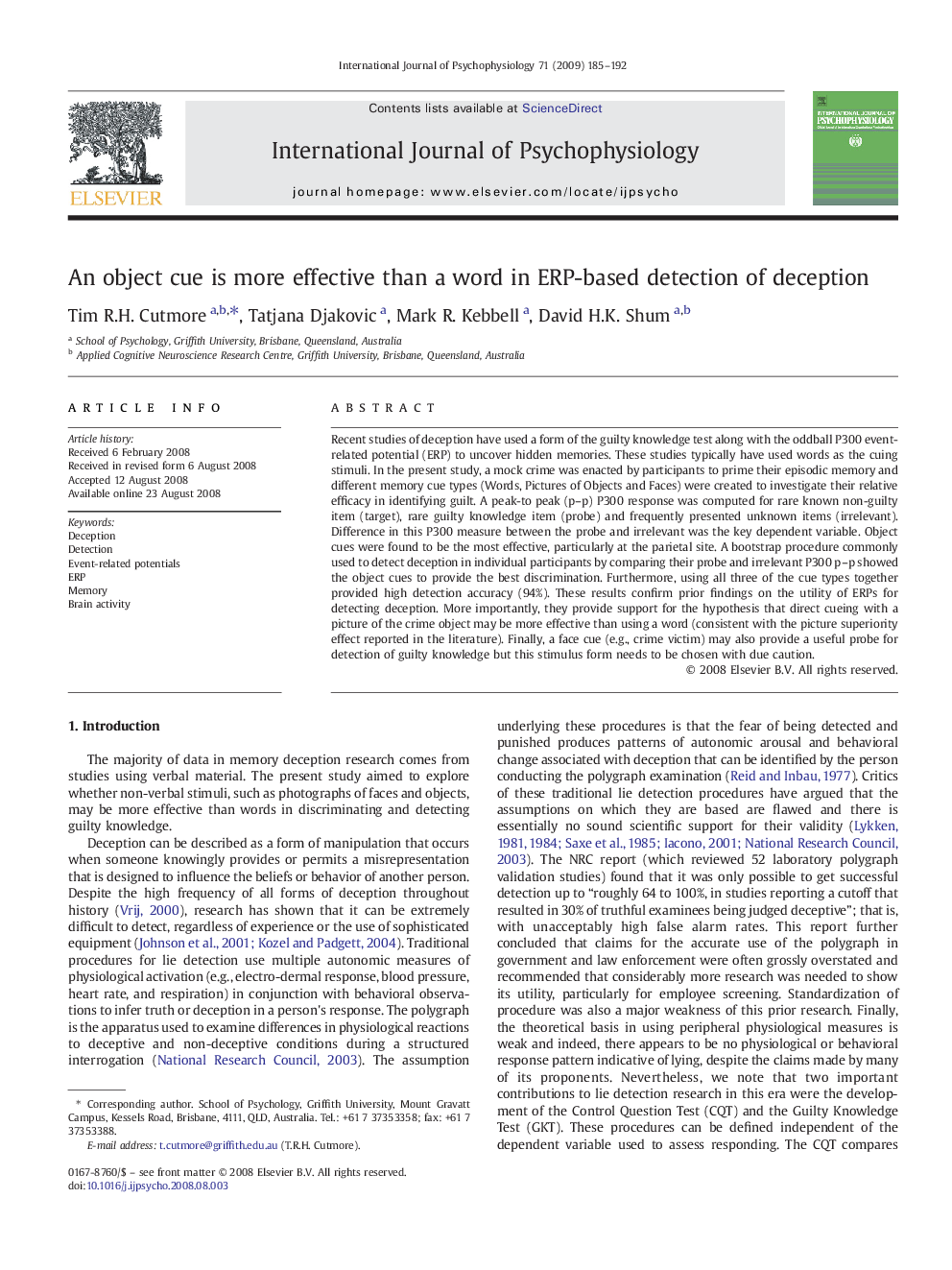| کد مقاله | کد نشریه | سال انتشار | مقاله انگلیسی | نسخه تمام متن |
|---|---|---|---|---|
| 930330 | 1474481 | 2009 | 8 صفحه PDF | دانلود رایگان |

Recent studies of deception have used a form of the guilty knowledge test along with the oddball P300 event-related potential (ERP) to uncover hidden memories. These studies typically have used words as the cuing stimuli. In the present study, a mock crime was enacted by participants to prime their episodic memory and different memory cue types (Words, Pictures of Objects and Faces) were created to investigate their relative efficacy in identifying guilt. A peak-to peak (p–p) P300 response was computed for rare known non-guilty item (target), rare guilty knowledge item (probe) and frequently presented unknown items (irrelevant). Difference in this P300 measure between the probe and irrelevant was the key dependent variable. Object cues were found to be the most effective, particularly at the parietal site. A bootstrap procedure commonly used to detect deception in individual participants by comparing their probe and irrelevant P300 p–p showed the object cues to provide the best discrimination. Furthermore, using all three of the cue types together provided high detection accuracy (94%). These results confirm prior findings on the utility of ERPs for detecting deception. More importantly, they provide support for the hypothesis that direct cueing with a picture of the crime object may be more effective than using a word (consistent with the picture superiority effect reported in the literature). Finally, a face cue (e.g., crime victim) may also provide a useful probe for detection of guilty knowledge but this stimulus form needs to be chosen with due caution.
Journal: International Journal of Psychophysiology - Volume 71, Issue 3, March 2009, Pages 185–192